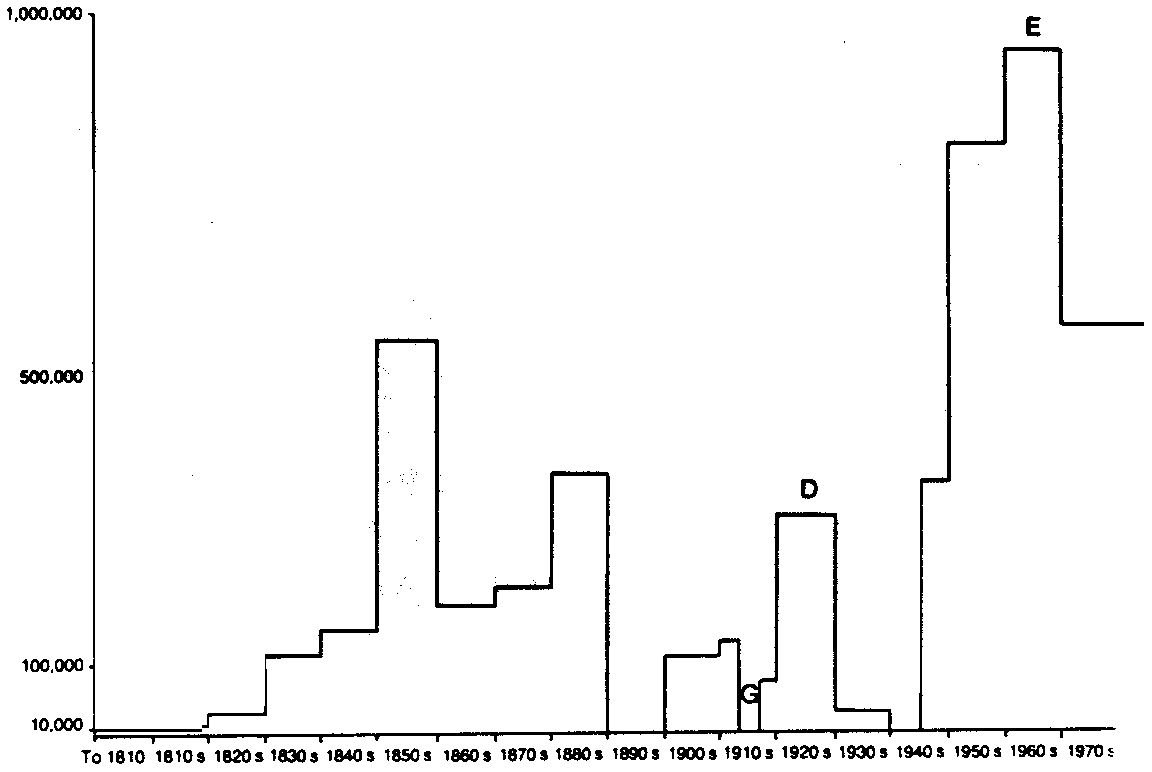|
|
|
Chronology of key events Leading up to discoveries of gold
| 1848 | Caroline Chisholm establishes Family Colonisation Loan Society to provide financial support for family migration. |
| 1851 | Gold discoveries in Victoria and NSW attract large numbers of immigrants from Europe, the USA and Chine. |
| 1852 | Last convicts transported to the eastern colonies. |
| 1855 | Victoria passes legislation to limit entry of Chinese. |
| 1861 | Anti-Chinese riots at Lambing Flat gold-field in NSW. Chine Restriction Act limits the number of Chinese entering NSW. |
| 1863 | Labourers from the Pacific Islanders brought to Queensland for cheep labour. |
| 1873-90 | Assisted immigration declines in most colonies. |
| 1890 | A severe economic depression in the eastern colonies brings a virtual halt to immigration in the 1890's. |
Gold & Chinese Immigrants
The discovery of gold in NSW and Victoria in 1851 resulted in a rapid expansion of
Australia's population. In 1850 Australia's non-Aboriginal population numbered about 405
000 people. By the end of the gold-rush decade the population had more than doubled,
reaching about 1 146 000. Gold-seekers came from all over the world, particularly Europe,
the United States and Chine. Between 1851 and 1860 about 50 000 emigrants (many of whom
received government assistance) left Britain for the Australian colonies. Almost 60 000
gold-seekers came from Continental Europe, at least 42 000 from China and perhaps 10 000
from the United States of America.
The Chinese gold-seekers were the first significant wave of non-European migrants to arrive in the colonies. European diggers and colonialists generally reacted to the Chinese presence with hostility. Anti-Chinese articles appeared in the newspapers and on the gold-fields, anti-Chinese riots broke out, specially when the gold became scarce
In spite of the inflow of assisted and other immigrants, the supply of labour was not always sufficient to meet the needs of colonial entrepreneurs. Because of this shortage of labour and also because European labour was considered unsuitable for the tropical conditions of the northern regions, the cane-growers of Queensland brought out Pacific Islanders to do the heavy manual jobs on their sugar-cane plantations. From 1863 the cane-growers paid shippers to bring Islanders to the cane-fields. The harsh treatment of the Islanders by shippers and cane-growers led to protests by European workers and clergymen. An Act of Parliament in 1868 sought to improve the treatment of the Islanders by assuring them wages of 6pound a year, a return trip at the end of their contracts and improved conditions on the ships.
Many unions and workers in Australia became strongly opposed to immigration in the last few decades of the 19th century, believing that it threatened their jobs. They were particularly opposed to the immigration of non-European people, whom they feared would work for lower wages. Like the European miners' resentment towards the industrious Chinese diggers in the 1850's, the resentment of European workers towards Pacific Islander and other non-European labourers helped to create the climate for the 'White Australia Policy' which was formally introduced in 1901.
Immigration to Australia
1800-1900

(source: Adapted from M. Dugan & J. Szwarc, Australia's
Migrant Experience, Edward Arnold, 1987, Appendix, A. Courtesy Australian Institute of
Multicultural Affairs)
Modern Australian History
| The beginning of Immigration to Australia | Convicts in Australia | Letter from a convict |
Immigration
| immigration background | Attitudes towards European immigration | Postwar immigration | Extracts - Immigration Restriction Act 1901 | Refugee's story |
Chronology of key events from:
| 1848-1890 leading upto Gold | 1892-1945 | 1945-73 | 1973-92 |